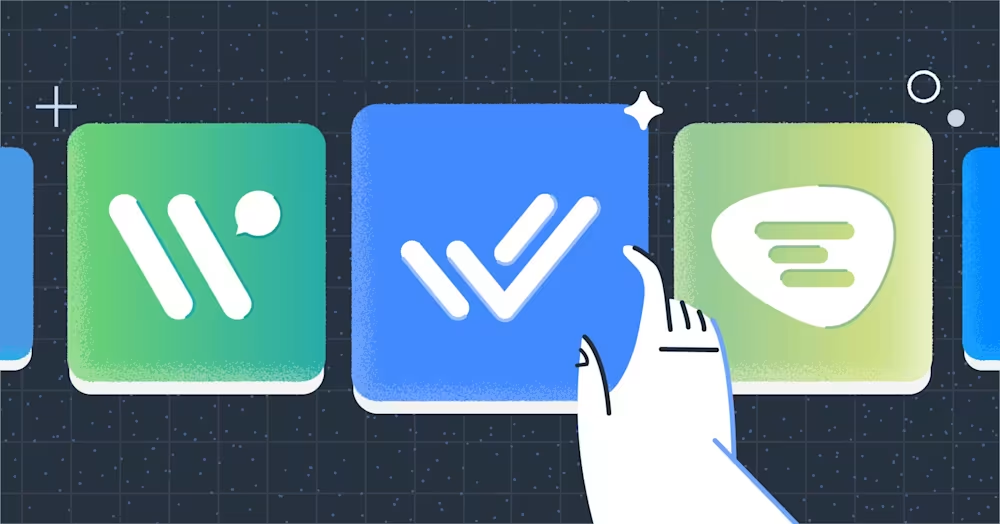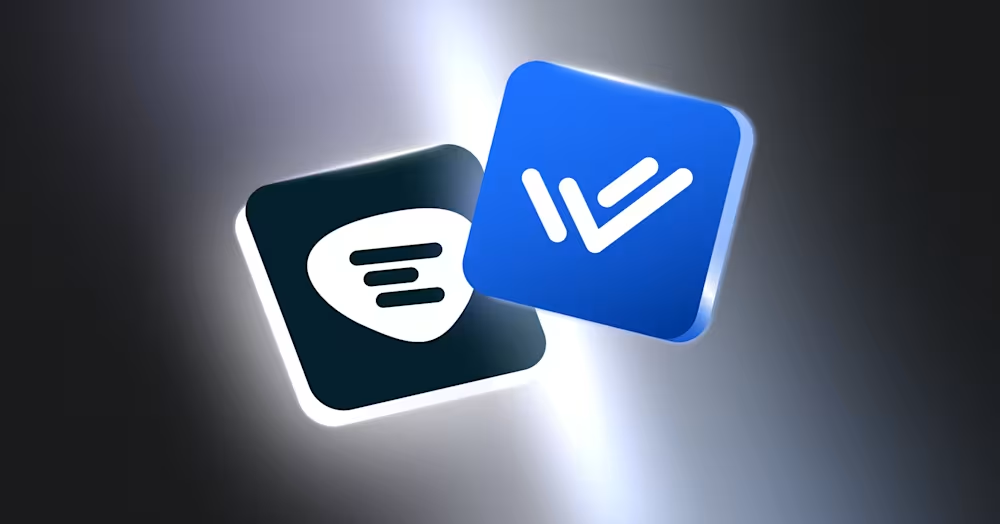Приложения для обмена сообщениями встречаются повсюду. Тем не менее, независимо от того, откуда вы, вы, вероятно, заметили два имени, которые постоянно поднимаются на вершину: Telegram и WhatsApp.
Выбор между ними не так просто, как выбрать любимый цвет. Речь идет о поиске правильного решения, которое поможет вам быстрее заключать сделки и удержать клиентов счастливыми. У каждого приложения есть свои сильные и слабые стороны и несколько сюрпризов, которые могут помочь командам по продажам и маркетингу.
Telegram vs WhatsApp: Быстрый взгляд
На бумаге, Telegram и WhatsApp могут показаться обманчиво похожими: они оба спроектированы для подключения людей. Тем не менее, хотя их конечная цель одна и та же, пути достижения этой цели значительно различаются.
Вот разворот их основных отличий:
| Telegram. | WhatsApp |
База пользователей | 950 миллионов пользователей | 2 миллиарда пользователей |
Доступность платформы | Мобильный, настольный и веб | Мобильный, настольный и веб |
Интерфейс | Полноценный функционал, но может перегрузить новых пользователей | Чистый и простой; легко освоить. |
Группы | Поддерживает до 200,000 пользователей | Поддерживает до 1,024 участников. |
Безопасность & Конфиденциальность | Сквозное шифрование только в секретных чатах. | Всестороннее шифрование по умолчанию для всех чатов |
Интеграции | Открытые API для пользовательских ботов и клиентов; утверждение не требуется | Бизнес-API интегрируется с CRM; требует одобрения |
Обмен мультимедиа | Файлы до 2GB (4GB Premium); облачное хранилище | Файлы до 2GB; нет облачного хранилища |
Вещание | Неограниченное количество подписчиков по каналам | Список трансляции ограничен 256; ограничения удалены с помощью таких инструментов, как respond.io |
Цены | Бесплатно; Премиум за $4.99/месяц | Бесплатно для личного использования; расходы на бизнес-API по оплате за сообщение. |
Теперь, когда у вас есть большая картинка, давайте посмотрим на то, как Telegram и WhatsApp сравниваются с их особенностями.
Преобразуйте разговоры в клиентов с помощью официального WhatsApp API от respond.io. ✨
Управляйте звонками и чатом WhatsApp в одном месте!
Telegram против WhatsApp: 9 ключевых различий.
Незначительные детали могут привести к выдающимся результатам, и понимание именно того, как эти два гиганта обмена сообщениями отличаются друг от друга, может помочь вам принять более обоснованное решение. Давайте начнем с изучения их баз пользователей.
#1 Telegram против WhatsApp: база пользователей и популярность.
Когда дело доходит до делового обмена сообщениями, размер имеет значение. Больше пользователей = больше возможностей для связи с аудиторией. Но за пределами одних только чисел, просто зная, где находится аудитория, поможет вам принять более умные решения. В конце концов, первым правилом продажи является место, где находятся ваши клиенты.
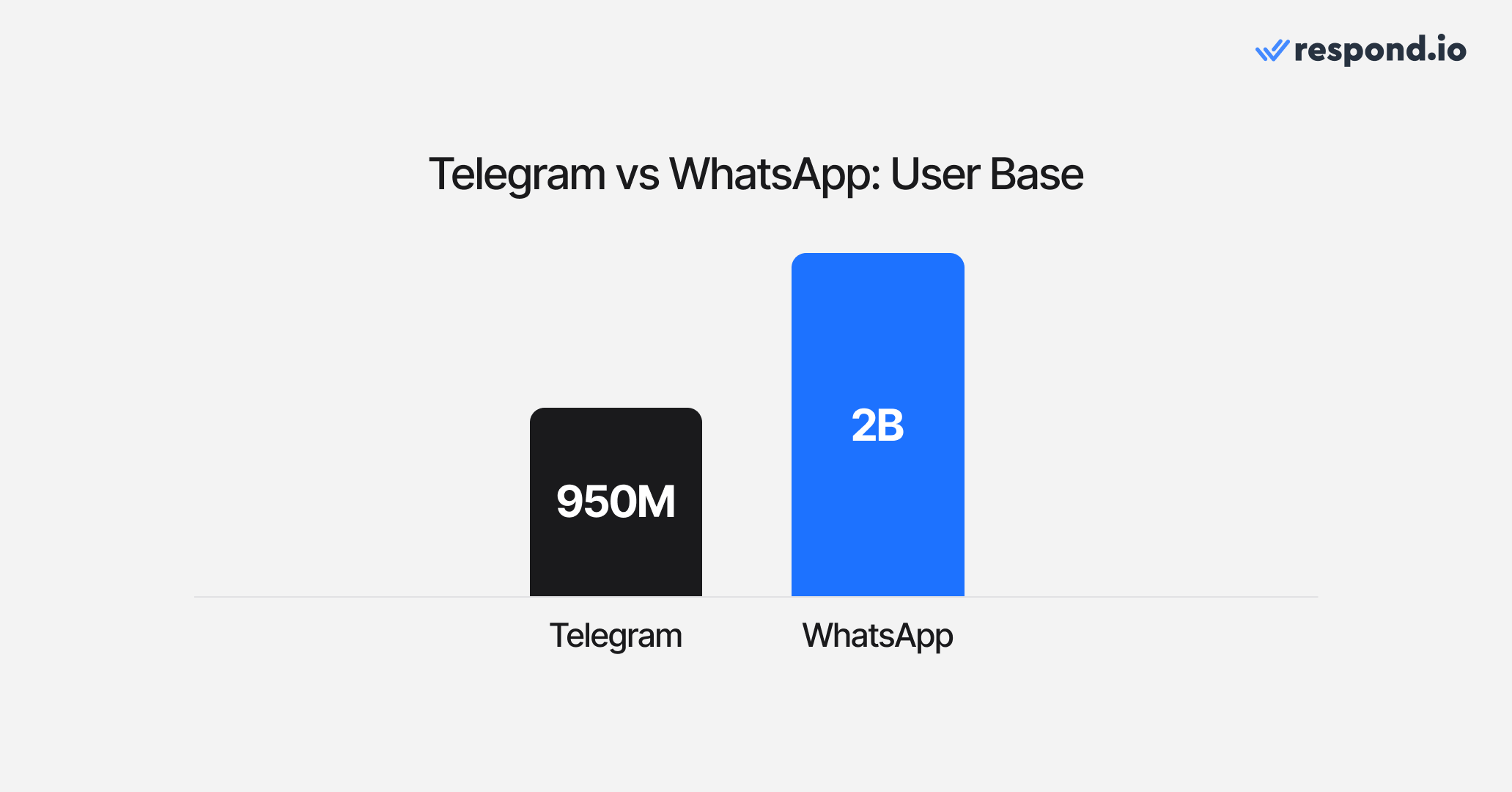
Telegram: С 950 миллионов пользователей, Telegram за последние годы последовательно поднимается в рейтинге. Аудитория сосредоточена в Азии (38%), Европе (27%), Латинской Америке (21%) и на Ближнем Востоке и Северной Африке (8%). WhatsApp: С 2 миллиарда пользователей, распространенных по всему миру, WhatsApp — король, когда речь идет о чистых цифрах.
WhatsApp: С 2 миллиардами пользователей по всему миру, когда дело доходит до чистых цифр, WhatsApp является королем. Более того, это приложение в таких регионах, как Индия, Латинская Америка и части Европы, что делает его безмозговой путь, если вы хотите достичь огромных масштабов.
Однако, если вы нацелены на технично ориентированные аудитории или конкретные регионы Азии и Европы, растущая популярность Telegram трудно игнорировать. Тем не менее, если вы ориентируетесь на техноориентированную аудиторию или конкретные регионы Азии и Европы, трудно игнорировать растущую популярность Telegram.
#2 Telegram против WhatsApp: Доступность платформы
У каждого есть телефон, ноутбук или планшет. Это означает, что команды продаж должны быть гибкими. Независимо от того, ведете ли вы сделку с ноутбуком, отвечаете на вопросы по телефону или ведете клиента на планшете, вам нужна платформа, которая работает с вами, а не против вас.
| Телеграмма | WhatsApp |
Поддержка устройства | Мобильный, рабочий стол, планшет | Мобильный, рабочий стол, планшет |
Функциональность мульти-устройства | Полностью поддерживаемый, независимый от телефона | Поддерживаются, но изначально полагаются на телефон |
Облачный | ✅ | ❌ |
Telegram: Полностью базируется на облаке, позволяет вам одновременно войти в систему на нескольких устройствах без привязки к вашему телефону. Синхронизация чатов между устройствами без труда означает, что вы можете переключиться с рабочего стола на планшет или телефон на ходу.
WhatsApp: Хотя WhatsApp доступен на мобильных устройствах, настольных компьютерах и веб, исторически для веб-версий и настольных версий необходим подключенный телефон. Последние обновления внедрили функциональность нескольких устройств, но опыт все еще не так гладкий, как это могло быть.
Гибкость платформы Telegram делает его очевидным победителем для команд, которым нужна функциональность на нескольких устройствах. WhatsApp технически справляется с задачами, но с некоторыми трудностями.
#3 Telegram против WhatsApp: Интерфейс и опыт пользователя
Хороший пользовательский интерфейс и пользовательский опыт делают или ломают все платформы обмена сообщениями. Потеряться среди запутанных кнопок и настроек - верный способ потерять время вашей команды и потенциально утратить лиды.
| Телеграмма | WhatsApp |
Простота использования | Кривая обучения высокая. | Простой и интуитивно понятный для всех пользователей |
Скорость усыновления | Медленнее из-за сложности | Быстрая посадка |
Для простоты и легкости обучения WhatsApp выигрывает. Если вы ищете дополнительные инструменты и настройки, Telegram стоит усилия, но освоение требует времени.
#4 Telegram vs WhatsApp: групповые сообщения
Независимо от того, ориентированы ли это на продажи мозгового штурма или группы клиентов, правильные функции обмена сообщениями в группах могут сделать все возможное.
| Телеграмма | WhatsApp |
Ограничение размера группы | Кривая обучения высокая. | Простой и интуитивно понятный для всех пользователей |
Управление администратором | Медленнее из-за сложности | Быстрая посадка |
Если вы управляете тысячами участников, Telegram является лучшим вариантом. Инструменты группы WhatsApp просты и эффективны для меньших, сфокусированных взаимодействий.
#5 Telegram vs WhatsApp: безопасность и конфиденциальность
Безопасные сообщения необходимы. Как потребители, так и компании нуждаются в защищенных платформах, защищающих данные. Никто не хочет чувствовать, что их разговоры уязвимы!
| Телеграмма | WhatsApp |
Сквозное шифрование | Только секретные чаты | Включено по умолчанию |
Хранилище данных | Облачное хранилище | Локальный |
Коллекция метаданных | Минимальный | Обширный |
WhatsApp обеспечивает простое, надежное шифрование для повседневного использования. Telegram предлагает больше нюансов, но требует дополнительных шагов для достижения такого же уровня безопасности.
#6 Телеграмма против WhatsApp: Интеграции
Приложение для обмена сообщениями является таким же мощным, как и инструменты, с которыми оно связано. Интеграции позволяют связывать сообщения с CRM, автоматизации рабочих процессов или даже инструментов генерации свинца, превращение простой чат-платформы в централизованный центр для ваших продаж и маркетинга.
| Телеграмма | WhatsApp |
API | Бесплатный Bot API и API Telegram. | Бизнес-API |
Гибкость | Открыт для всех, без комиссий или одобрения | Требует одобрения для использования API |
Telegram отлично подходит для бизнеса с приоритетом гибкости и настраиваемых рабочих потоков, в то время как WhatsApp лучше подходит для полированных, структурированных операций.
#7 Telegram vs WhatsApp: Совместное использование мультимедиа
Картинки говорят тысячу слов. Инфографика, торговые карты и видео объединяются, чтобы помочь вам лучше связаться с клиентами.
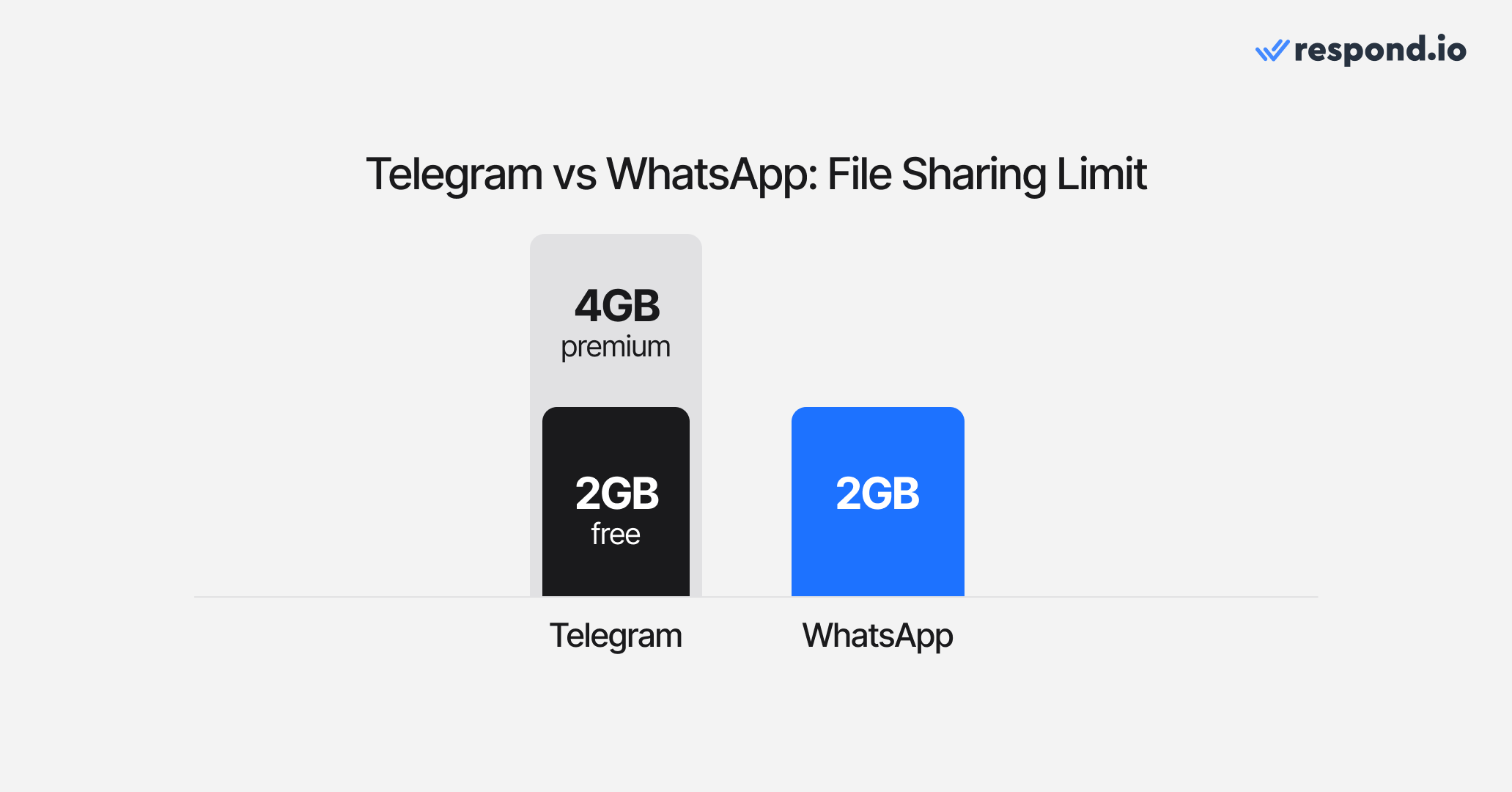
Для быстрого, более случайного обмена медиа WhatsApp хорошо работает. Но если вы работаете с крупными идеями и большими файлами, мультимедийные возможности Telegram могут быть более подходящими для вас.
#8 Telegram против WhatsApp: трансляция
Трансляция обеспечивает прямую линию связи с клиентами через обновления, акции и объявления.
| Телеграмма | WhatsApp |
Лимит подписчиков | Неограниченный | 256 получателей |
Требования | Нет | Получатели должны сохранить ваш номер |
Масштабирование | Высокий | Ограниченные, но масштабируемые с помощью инструментов API |
Telegram: Мультимедийный обмен Telegram разработан для интенсивного использования. С ограничениями на размер файла до 2 ГБ (4 ГБ для премиум-пользователей), вы можете отправлять все: от видео длиной фильма до полных презентаций. Кроме того, все это хранится в облаке, поэтому получатели могут получать доступ к файлам в любое время и в любом месте.
WhatsApp: Обмен медиа в WhatsApp интуитивно понятен, но имеет больше ограничений. WhatsApp разрешает обмен файлами до 2 ГБ, что подходит для большинства стандартных потребностей. Однако, для чрезвычайно больших файлов, пользователям может понадобиться рассмотреть альтернативные методы.
Для телерадиовещания на основе каналов Telegram предлагает отличное решение с неограниченным количеством абонентов. С другой стороны, WhatsApp, интегрированный с такими инструментами, как respond.io, может быть гораздо более эффективным для более целенаправленного и персонализированного outreach.
#9 Telegram vs WhatsApp: Цены
При выборе мессенджера важно учитывать стоимость. Но дело не только в цене, но и в той ценности, которую вы получаете.
| Телеграмма | WhatsApp |
Базовая стоимость | Бесплатно | Бесплатно |
Премиум-подписка | $4.99/месяц
(4GB загрузки файлов,
ускоряющиеся загрузки,
эксклюзивные стикеры) | ❌ |
Telegram: Каналы Telegram предназначены для трансляции сообщений неограниченному числу подписчиков. Подписчики могут присоединяться или покидать каналы по своему усмотрению, обеспечивая пользователям гибкость и контроль над содержанием, которое они получают.
WhatsApp: Обычные списки WhatsApp ограничены 256 получателями и требуют от получателей сохранения вашего номера. Однако, при использовании WhatsApp Business API с помощью таких инструментов, как respond.io, эти ограничения удаляются. Бизнес может отправлять массовые сообщения без управления списками и получать отчеты о доставке и прочтении, чтобы отслеживать производительность.
Telegram является фантастическим для компаний с жесткими бюджетами. Хотя WhatsApp бесплатен, если вам не нужен WhatsApp API, его сочетание с respond.io может помочь контролировать расходы.
Telegram или WhatsApp: Какое приложение для обмена сообщениями лучше для вас?
Оба приложения выглядят замечательно на бумаге, и если вы все еще не уверены, это вполне нормально. У обоих есть свои плюсы и минусы, но чтобы помочь вам решить, какое приложение лучше, задайте себе эти 5 вопросов.
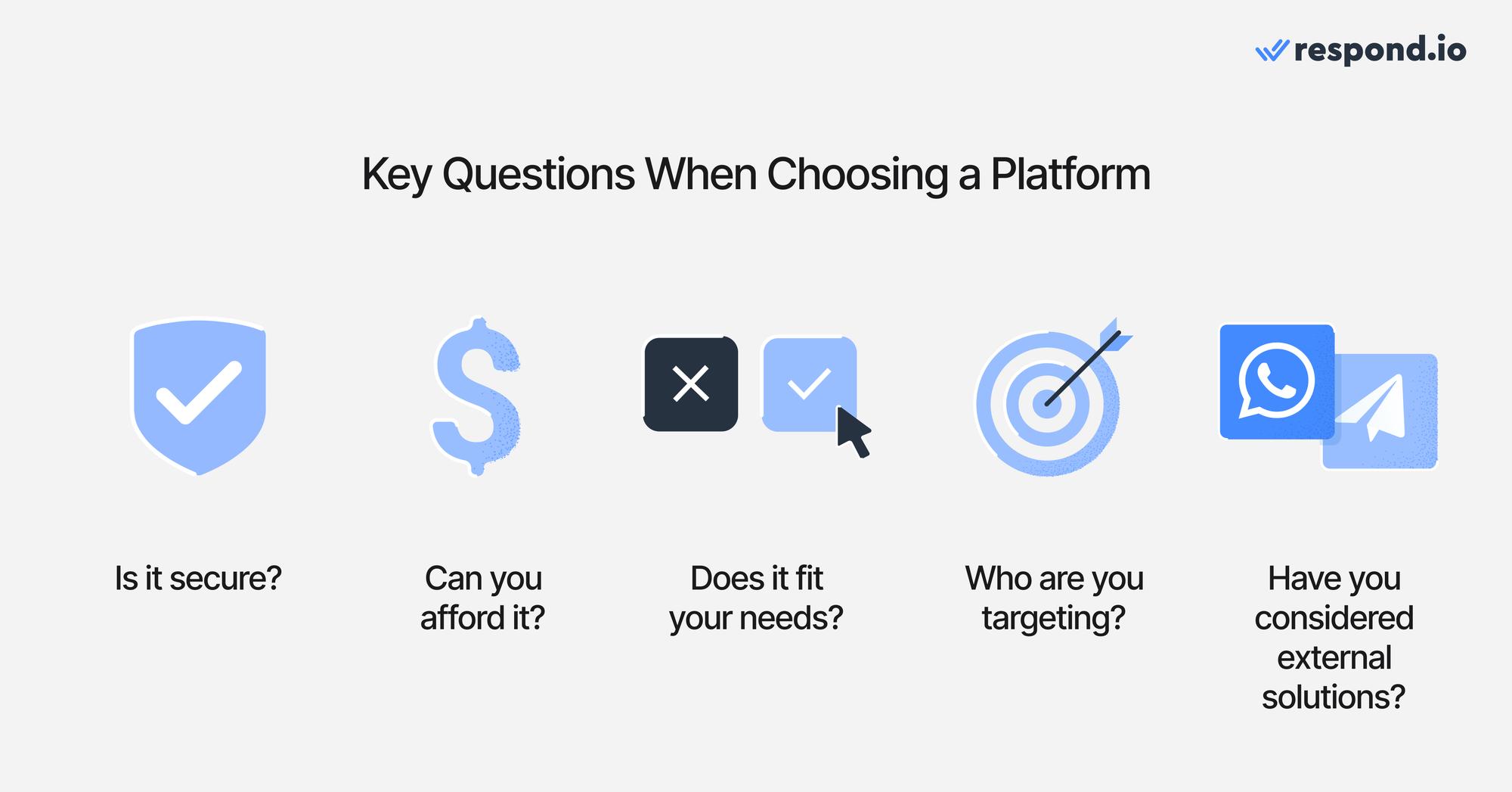
#1 Telegram или WhatsApp: Насколько важна безопасность данных для вашего бизнеса?
Безопасность – это не то, что вам нужно делать, независимо от того, работаете ли вы в регулируемой отрасли.
Клиенты хотят, чтобы Ваши разговоры были безопасными, и Ваш долг как бизнес доставить с этой целью. Хотя обе платформы безопасны, WhatsApp может быть предпочтительнее для некоторых, так как его встроенное сквозное шифрование позволяет вести более безопасные диалоги без дополнительных действий.
#2 Telegram или WhatsApp: Каков ваш бюджет?
Если вы не можете позволить себе затраты на платформу, то это, вероятно, не для вас. Telegram в основном бесплатен, предлагая множество функций без дополнительных затрат, хотя имеет более сложный интерфейс.
WhatsApp является бесплатным, если вы не рассматриваете возможность использования API, то дополнительные комиссии проигрываются в зависимости от вашей ситуации, хотя внешние платформы, такие как ответ. o может помочь вам оптимизировать эти расходы.
#3 Telegram или WhatsApp: Какие ваши потребности в сообщениях?
Подумайте об особенностях, которые наиболее важны для деловых коммуникаций. С другой стороны, если вы считаете, что вашему бизнесу могут помочь расширенные функции, такие как боты и возможность обмена большими файлами, Telegram может подойти лучше.
С другой стороны, если вы считаете, что ваш бизнес будет использовать расширенные возможности, такие как боты и большие функции совместного использования файлов, Для вас может быть лучше Telegram.
#4 Telegram или WhatsApp: Кто ваша целевая аудитория?
Вам нужно согласовать свои продажи и маркетинг в соответствии с вашей аудиторией.
WhatsApp широко используется в таких регионах как Юго-Восточная Азия и Латинская Америка, а Telegram имеет сильное присутствие в Восточной Европе и на Ближнем Востоке.
#5 Telegram или WhatsApp: Рассматривали ли вы возможность использовать оба?
Telegram и WhatsApp являются отличными решениями, поэтому выбор между ними может быть непростым. Но что если мы сказали, что есть третий вариант? Почему бы не использовать оба Telegram и WhatsApp?
Несомненно, управление несколькими каналами может показаться сложным, но вот тут и приходит на помощь respond.io, позволяя вам легко вести все ваши разговоры в одном месте.
Преобразуйте разговоры в клиентов с помощью официального WhatsApp API от respond.io. ✨
Управляйте звонками и чатом WhatsApp в одном месте!
Дополнительные материалы
Если вам понравилась наша статья, проверьте следующие материалы:
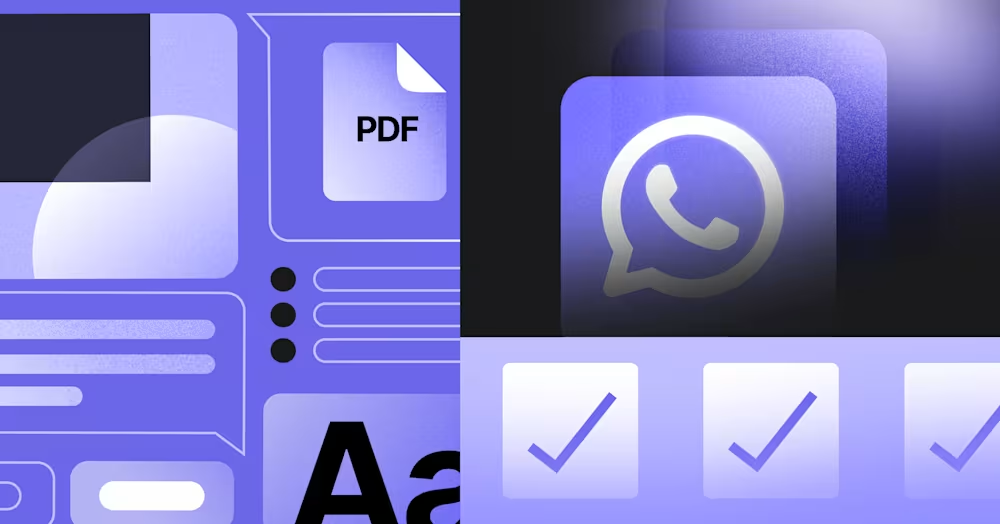



































 Обзор
Обзор Электроника
Электроника Мода и одежда
Мода и одежда Мебель
Мебель Ювелирные изделия
Ювелирные изделия
 Внеурочные занятия
Внеурочные занятия Спорт и фитнес
Спорт и фитнес
 Центр красоты
Центр красоты Стоматологическая клиника
Стоматологическая клиника Медицинская клиника
Медицинская клиника
 Услуги по уборке и няням
Услуги по уборке и няням Фотография и видеосъемка
Фотография и видеосъемка
 Розничная продажа авто запчастей
Розничная продажа авто запчастей Автосалон
Автосалон
 Турагентство и оператор туров
Турагентство и оператор туров









